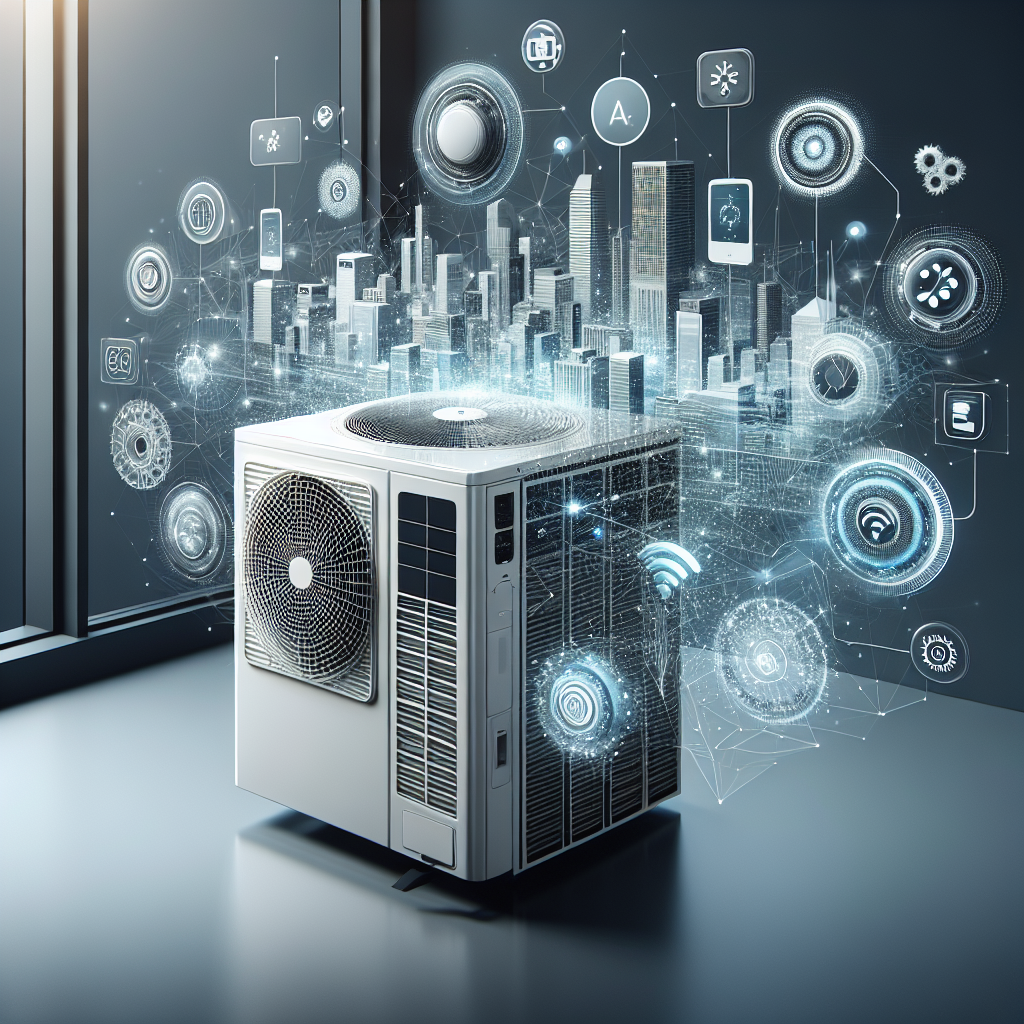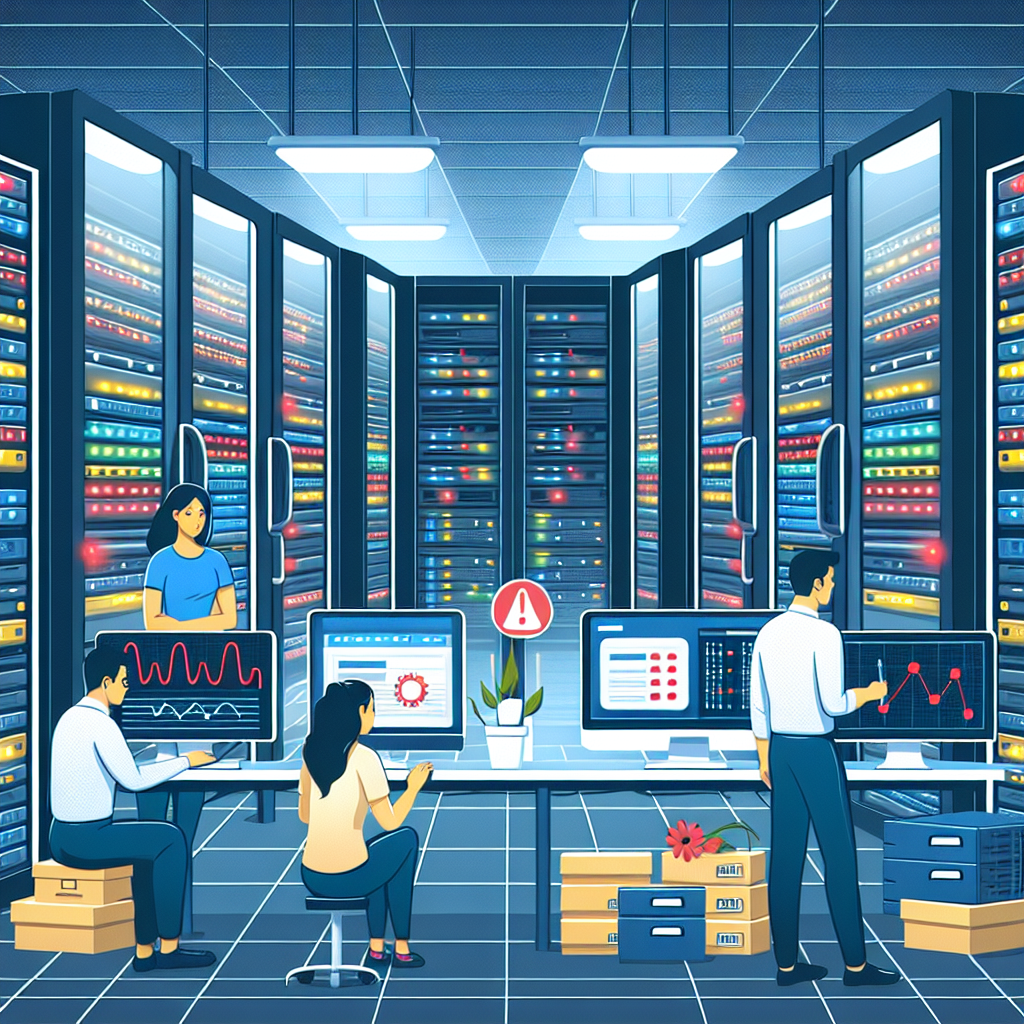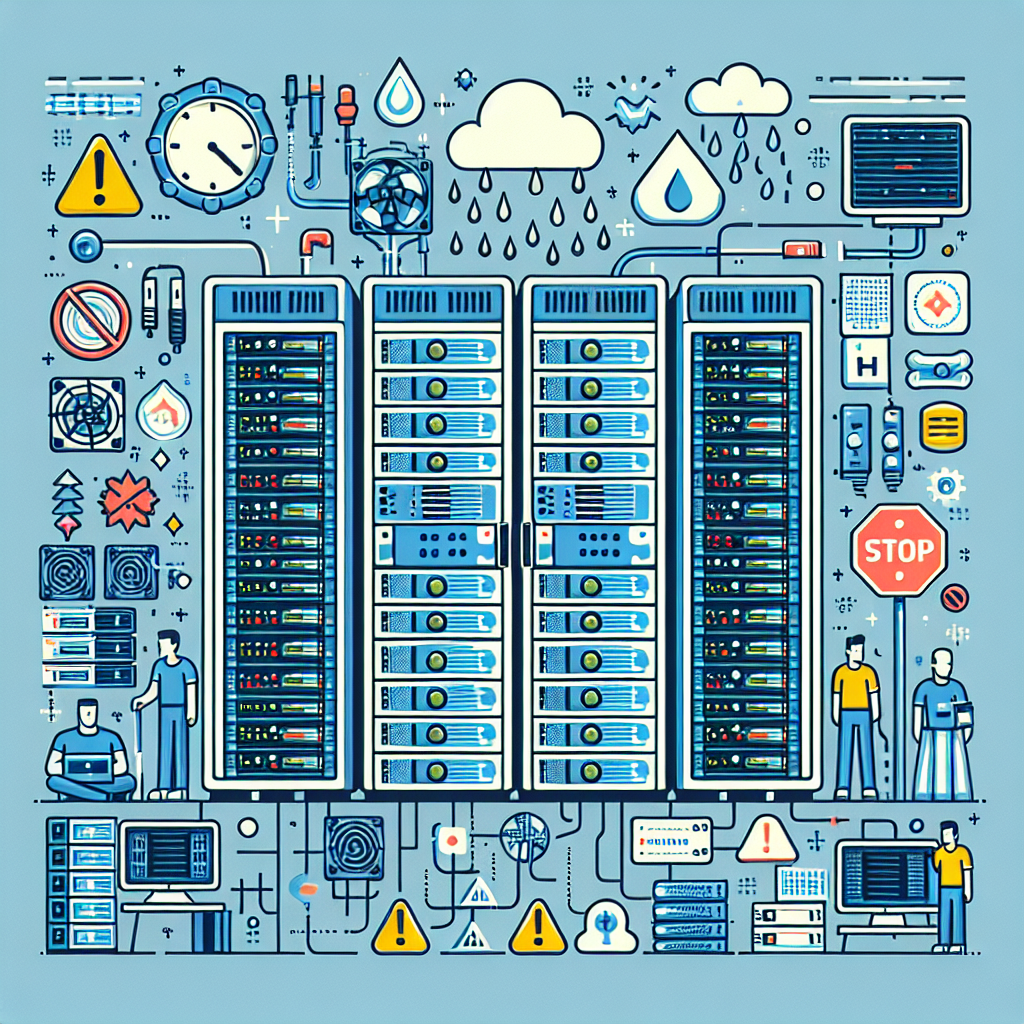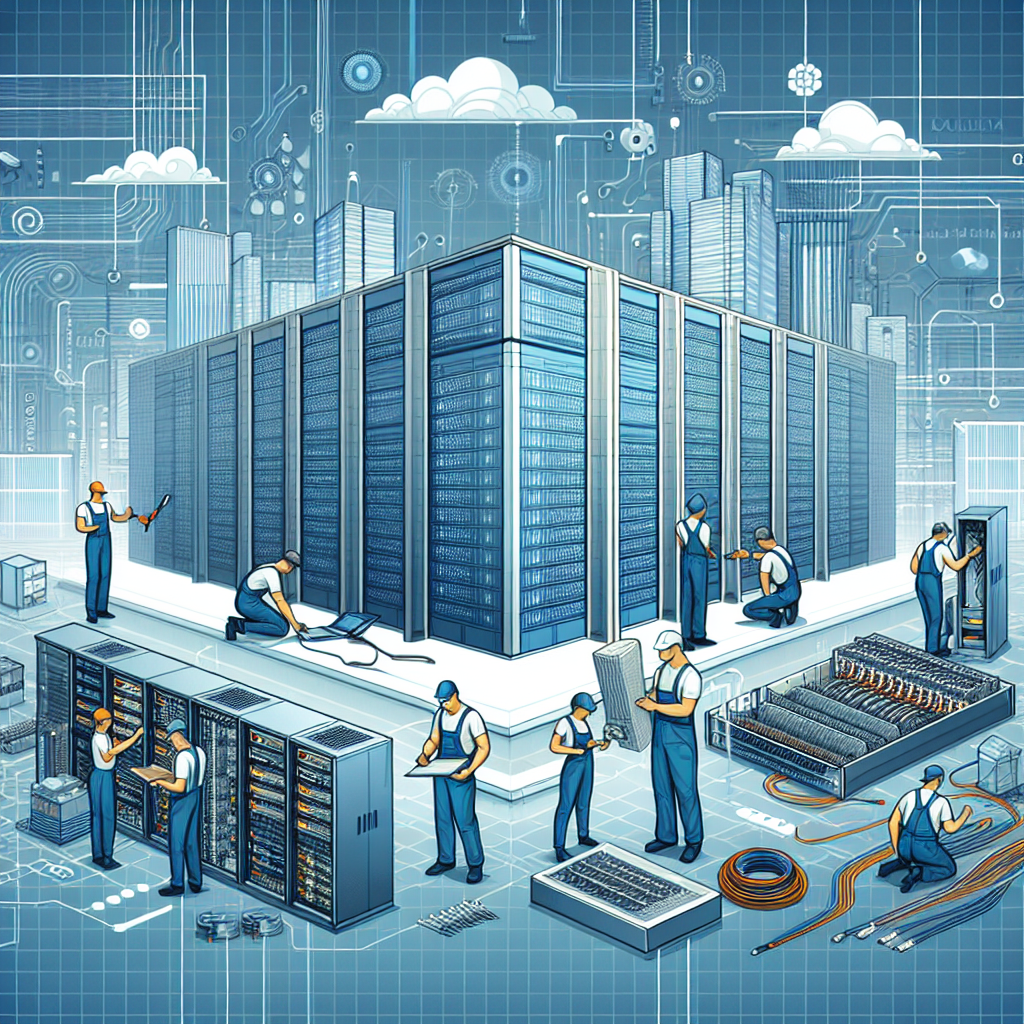Your cart is currently empty!
Tag: Top

Top Trends in Air Conditioning Technology
Air conditioning technology has come a long way in recent years, with advancements in efficiency, sustainability, and convenience. As we head into the new year, here are some of the top trends in air conditioning technology to keep an eye on.1. Smart HVAC Systems
Smart technology has become increasingly popular in the air conditioning industry, with the integration of Wi-Fi-enabled thermostats and systems that can be controlled remotely through a smartphone app. These systems allow homeowners to easily adjust their temperature settings, monitor energy usage, and receive alerts for maintenance issues.
2. Variable Refrigerant Flow (VRF) Systems
VRF systems are becoming more popular due to their energy efficiency and ability to provide zoned heating and cooling. These systems use a single outdoor unit to connect multiple indoor units, allowing for individual temperature control in different areas of a building. This can lead to significant energy savings and improved comfort for occupants.
3. Inverter Technology
Inverter technology is another trend that is gaining traction in the air conditioning industry. Inverter compressors are able to adjust their speed based on the cooling or heating needs of a space, resulting in more precise temperature control and increased energy efficiency. This technology can help reduce energy consumption and lower utility bills.
4. Energy-Efficient Cooling Options
With a growing focus on sustainability and energy efficiency, manufacturers are developing air conditioning systems that use less energy and produce fewer greenhouse gas emissions. These systems may incorporate features such as variable-speed motors, advanced filtration systems, and environmentally-friendly refrigerants to reduce their environmental impact.
5. Heat Pump Technology
Heat pumps are becoming a popular alternative to traditional air conditioning systems, as they can provide both heating and cooling in one unit. These systems work by transferring heat from one area to another, making them highly efficient in moderate climates. Heat pumps can help reduce energy costs and improve indoor comfort year-round.
6. Air Purification Technology
Indoor air quality has become a major concern for many homeowners, especially in light of the COVID-19 pandemic. As a result, air conditioning systems with advanced air purification technology, such as UV lights, HEPA filters, and ionizers, are gaining popularity. These systems can help remove harmful particles and improve overall air quality in a space.
Overall, air conditioning technology is evolving rapidly to meet the demands of modern homeowners and businesses. By staying informed about the latest trends in the industry, consumers can make informed decisions when it comes to selecting a new air conditioning system. From smart HVAC systems to energy-efficient cooling options, there are a variety of innovative technologies available to help keep indoor spaces comfortable and healthy.

Top Challenges in Data Center Monitoring and How to Overcome Them
Data centers are the backbone of modern technology infrastructure, housing the servers, storage, and networking equipment that support the operations of businesses and organizations around the world. As data centers continue to grow in size and complexity, monitoring these facilities has become increasingly challenging. Here are some of the top challenges in data center monitoring and how to overcome them.1. Lack of Visibility: One of the biggest challenges in data center monitoring is a lack of visibility into the entire infrastructure. With so many interconnected systems and devices, it can be difficult to get a comprehensive view of what is happening in the data center at any given time. To overcome this challenge, organizations can implement a centralized monitoring solution that provides real-time insights into the performance and health of all systems and devices in the data center.
2. Data Overload: Data centers generate a massive amount of data every day, making it difficult for IT teams to sift through the noise and identify critical issues. To address this challenge, organizations can leverage advanced analytics and machine learning algorithms to automatically detect anomalies and trends in the data, enabling proactive monitoring and troubleshooting.
3. Scalability: As data centers continue to grow in size and complexity, monitoring solutions must be able to scale along with them. Traditional monitoring tools may struggle to keep up with the increasing volume of data and devices in the data center. To overcome this challenge, organizations can invest in cloud-based monitoring solutions that offer elastic scalability and can adapt to changing needs.
4. Security: Data centers are prime targets for cyberattacks, making security a top concern for IT teams. Monitoring solutions must be able to detect and respond to security threats in real-time to protect sensitive data and prevent downtime. To enhance security in the data center, organizations can implement network segmentation, encryption, and access controls, in addition to deploying advanced security monitoring tools.
5. Complexity: With the rise of virtualization, cloud computing, and software-defined networking, data centers have become more complex than ever before. Monitoring these dynamic environments requires a deep understanding of the interdependencies between different systems and applications. To overcome this challenge, organizations can use visualization tools to map out the relationships between various components in the data center and identify potential points of failure.
In conclusion, data center monitoring presents a number of challenges for IT teams, but with the right tools and strategies, these challenges can be overcome. By investing in advanced monitoring solutions, leveraging analytics and machine learning, and prioritizing security, organizations can ensure the reliability and performance of their data center infrastructure.

The Top Causes of Data Center Downtime and How to Avoid Them
Data centers are the backbone of modern businesses, housing the critical infrastructure that keeps operations running smoothly. However, even the most sophisticated data centers are not immune to downtime, which can have devastating consequences for businesses. In fact, according to a recent study, the average cost of data center downtime is a staggering $740,357 per incident.So, what are the top causes of data center downtime, and more importantly, how can businesses avoid them? Let’s take a closer look at some of the most common culprits of data center downtime and strategies for preventing them.
1. Power Outages
Power outages are one of the most common causes of data center downtime. Whether due to a natural disaster, equipment failure, or human error, a loss of power can bring operations to a screeching halt. To avoid this, businesses should invest in redundant power supplies, such as uninterruptible power supplies (UPS) and backup generators, to ensure continuous power to critical systems.
2. Cooling System Failures
Data centers generate a significant amount of heat, and cooling systems are essential for maintaining optimal operating temperatures. When cooling systems fail, servers can overheat and malfunction, leading to downtime. Regular maintenance and monitoring of cooling systems can help prevent failures and ensure that data center temperatures remain within safe limits.
3. Network Issues
Network connectivity is crucial for data center operations, and any issues with the network can result in downtime. To avoid network-related downtime, businesses should implement redundant network connections and regularly test and monitor network performance to identify and address potential issues before they cause disruptions.
4. Hardware Failures
Hardware failures, such as server crashes or storage system malfunctions, can also lead to data center downtime. To minimize the risk of hardware failures, businesses should invest in high-quality equipment, regularly update and maintain hardware components, and implement a robust data backup and recovery strategy to quickly restore operations in the event of a failure.
5. Human Error
Human error is another common cause of data center downtime. From accidental deletion of critical data to misconfigurations of network settings, human mistakes can have serious consequences for data center operations. To mitigate the risk of human error, businesses should provide comprehensive training for staff members, implement strict access controls and permissions, and regularly review and audit data center processes to identify and address potential vulnerabilities.
In conclusion, data center downtime can have significant financial and operational implications for businesses. By understanding the top causes of downtime and implementing proactive measures to prevent them, businesses can minimize the risk of disruptions and ensure the continuous availability of critical systems and services. Taking a proactive approach to data center maintenance and monitoring can help businesses avoid costly downtime and maintain a competitive edge in today’s fast-paced digital landscape.

Top Strategies for Resolving Data Center Performance Problems
Data centers are the backbone of modern businesses, housing crucial IT infrastructure and data that is essential for operations. However, data center performance problems can arise, causing downtime, slow response times, and ultimately impacting business operations. Resolving these issues promptly is crucial to ensure uninterrupted service delivery and maintain customer satisfaction.Here are some top strategies for resolving data center performance problems:
1. Monitoring and Analysis: The first step in resolving data center performance problems is to monitor and analyze performance metrics regularly. This includes monitoring CPU usage, memory utilization, network traffic, and storage performance. By identifying any anomalies or bottlenecks, IT teams can proactively address issues before they impact operations.
2. Capacity Planning: Conducting regular capacity planning exercises can help ensure that the data center infrastructure is adequately sized to meet current and future demands. By forecasting growth and scaling resources accordingly, businesses can prevent performance issues caused by resource constraints.
3. Optimization: Optimizing data center infrastructure and configurations can significantly improve performance. This includes tuning servers, storage systems, and network devices to ensure optimal performance. Additionally, implementing technologies such as virtualization and automation can help streamline operations and improve efficiency.
4. Redundancy and Failover: Implementing redundancy and failover mechanisms is essential to ensure high availability and minimize downtime. By having backup systems and failover mechanisms in place, businesses can quickly recover from hardware failures or other issues that may impact performance.
5. Performance Testing: Regularly testing data center performance through load testing and stress testing can help identify potential performance bottlenecks and weaknesses. By simulating real-world scenarios, IT teams can proactively address performance issues before they impact operations.
6. Patch Management: Keeping systems up to date with the latest patches and updates is crucial for maintaining data center security and performance. Regular patch management practices can help address vulnerabilities and improve system stability.
7. Collaboration and Communication: Effective collaboration and communication between IT teams, vendors, and stakeholders are essential for resolving data center performance problems. By working together to identify and address issues, businesses can ensure a coordinated response and timely resolution.
In conclusion, resolving data center performance problems requires a proactive approach, regular monitoring, and optimization of infrastructure. By following these top strategies, businesses can ensure high availability, efficiency, and performance of their data center operations.

Top Tips for Ensuring Data Center Reliability with Maintenance
Data centers are the backbone of modern businesses, providing the necessary infrastructure for storing and processing critical data. With the increasing reliance on technology, ensuring data center reliability is crucial to avoid costly downtime and potential data loss. One of the key factors in maintaining data center reliability is regular maintenance. Here are some top tips for ensuring data center reliability with maintenance.1. Conduct regular inspections: Regular inspections of the data center infrastructure, including cooling systems, power supplies, and security measures, are essential to identify any potential issues before they escalate into major problems. By conducting regular inspections, you can address any issues promptly and prevent costly downtime.
2. Implement a preventive maintenance schedule: Developing a preventive maintenance schedule for all critical components of the data center is crucial for ensuring reliability. This schedule should include routine maintenance tasks such as cleaning, testing, and replacing components as needed to prevent equipment failures.
3. Monitor environmental conditions: Monitoring environmental conditions such as temperature and humidity levels is essential for ensuring optimal performance of data center equipment. By monitoring these conditions, you can identify any potential issues that may impact the reliability of the data center and take corrective action as needed.
4. Test backup systems regularly: Backup systems are essential for ensuring data center reliability in the event of a power outage or equipment failure. Regularly testing backup systems, including uninterruptible power supplies (UPS) and backup generators, is crucial to ensure they are functioning properly and can support the data center during emergencies.
5. Train staff on maintenance best practices: Properly trained staff can play a critical role in maintaining data center reliability. Provide training on maintenance best practices, including how to properly clean and maintain equipment, identify potential issues, and perform routine maintenance tasks.
6. Document maintenance activities: Keeping detailed records of maintenance activities, including inspections, repairs, and preventive maintenance tasks, is essential for tracking the reliability of the data center. Documenting maintenance activities can also help identify trends and potential issues that may need to be addressed.
7. Stay up to date on industry best practices: The data center industry is constantly evolving, with new technologies and best practices emerging regularly. Staying up to date on industry trends and best practices can help ensure that your data center is operating at peak performance and reliability.
By following these top tips for ensuring data center reliability with maintenance, businesses can minimize the risk of costly downtime and data loss. Regular maintenance is essential for keeping data center equipment running smoothly and optimizing performance, ultimately contributing to the overall success of the business.

Top Strategies for Conducting a Successful Data Center Audit
In today’s digital age, data centers play a crucial role in storing and managing vast amounts of information for businesses of all sizes. However, ensuring the security and efficiency of data centers is a complex task that requires regular auditing. A data center audit is a comprehensive evaluation of the physical, technical, and operational aspects of a data center to identify any potential risks or weaknesses. To help organizations conduct a successful data center audit, here are some top strategies to consider:1. Define the scope and objectives: Before conducting a data center audit, it is essential to clearly define the scope and objectives of the audit. This includes identifying the specific areas of the data center that will be evaluated, as well as the goals and expectations of the audit process.
2. Conduct a risk assessment: A thorough risk assessment is a critical component of a successful data center audit. This involves identifying and evaluating potential risks and vulnerabilities in the data center’s physical infrastructure, network security, and operational processes.
3. Review documentation and policies: It is essential to review and analyze all relevant documentation, including data center policies, procedures, and service level agreements. This will help ensure that the data center is operating in compliance with industry standards and best practices.
4. Perform a physical inspection: A physical inspection of the data center facility is necessary to assess its overall condition and security measures. This includes evaluating the layout of the data center, the condition of equipment and infrastructure, and the implementation of security controls.
5. Assess network and data security: A key aspect of a data center audit is evaluating the network and data security measures in place. This includes assessing the effectiveness of firewalls, intrusion detection systems, encryption protocols, and access controls to protect sensitive data from cyber threats.
6. Test disaster recovery and business continuity plans: Disaster recovery and business continuity plans are essential for ensuring the resiliency of a data center in the event of a disruption or disaster. It is important to test these plans regularly to ensure they are effective and can be implemented efficiently.
7. Document findings and recommendations: Following the audit, it is crucial to document all findings and recommendations in a comprehensive report. This report should outline any areas of concern, potential risks, and recommended actions to address any issues identified during the audit.
By following these top strategies for conducting a successful data center audit, organizations can ensure the security, efficiency, and reliability of their data center operations. A thorough audit process can help identify and mitigate potential risks, improve operational performance, and enhance overall data center security and compliance.
